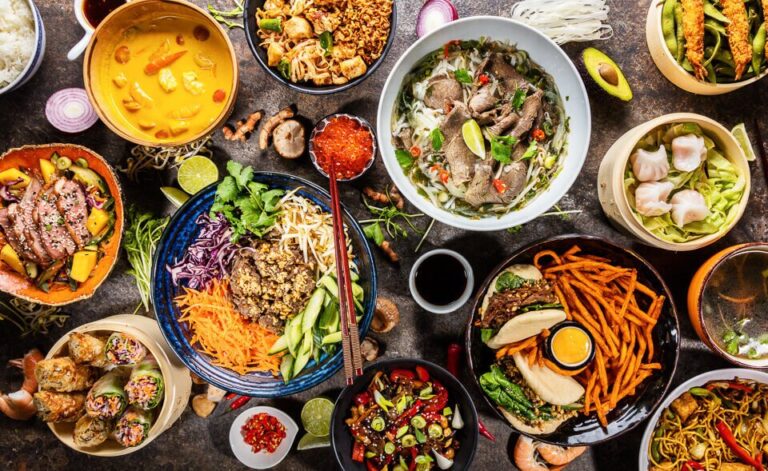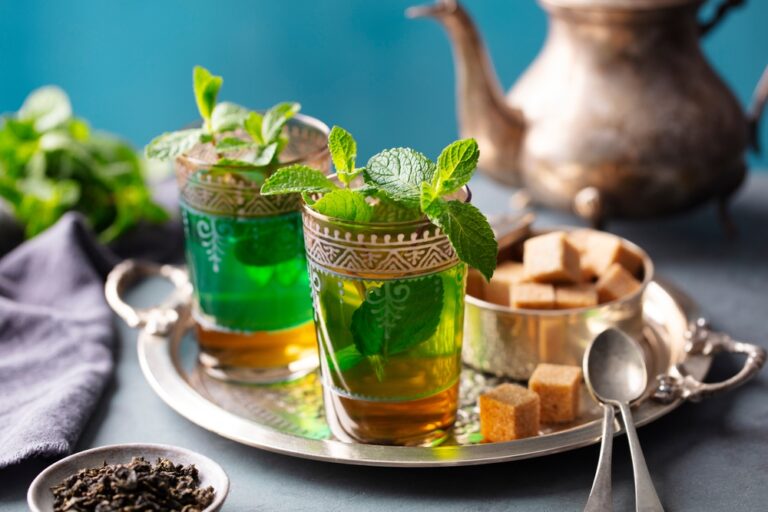A Taste of Morocco: Culinary Journeys from Marrakech Markets to Berber Villages
Morocco’s cuisine is a symphony of flavors—a tapestry woven from Berber traditions, Arab influences, and Mediterranean vibrancy. For travelers seeking more than sun-drenched landscapes, the country offers a sensory journey through its kitchens, markets, and dining tables. From the bustling souks of Marrakech to the quiet mountain villages of the Atlas, every bite tells a story. Here’s how to savor it.

- Marrakech: The Spice-Infused Heart of Moroccan Gastronomy
Begin your culinary adventure in Marrakech , where the air itself seems seasoned with cumin, saffron, and cinnamon. The labyrinthine alleys of Jemaa el-Fnaa market buzz with vendors hawking pyramids of spices, fresh mint, and preserved lemons. Dive into the chaos with a purpose: sample street food like msemen (flaky pancakes) drizzled with honey or skewered lamb grilled over charcoal.
For a deeper dive, book a cooking class at a local riad . Many include a guided tour of the Marché des Épices , where you’ll learn to distinguish between ras el hanout blends (a complex mix of up to 30 spices) and select ingredients for your own tagine. Back in the kitchen, under the guidance of a dada (traditional cook), layer marinated meat, seasonal vegetables, and aromatic herbs into a clay pot, then watch as slow-cooked magic unfolds.
Pro Tip: Visit Café des Épices in Djemaa el-Fnaa for a mint tea break—the perfect accompaniment to soaking in the market’s energy.
- Tagine and Beyond: Mastering Morocco’s Signature Dishes
The tagine, both a cooking vessel and a dish, epitomizes Moroccan cuisine. This slow-cooked stew, often featuring lamb with prunes and almonds or chicken with preserved lemons, is a testament to the harmony of sweet and savory. But Morocco’s culinary repertoire extends far beyond this iconic dish:
Couscous : Traditionally reserved for Fridays, this steamed semolina grain is served with tender meat and vegetables. Try it in a family-run eatery like Dar Zellij in Fes.
Pastilla : A savory-sweet pie filled with spiced pigeon meat, layered with almond paste and dusted with powdered sugar. It’s a dish of contrasts, often served at celebrations.
Harira : A hearty tomato-based soup enriched with lentils and lamb, traditionally used to break the fast during Ramadan.
Don’t miss the chance to enjoy mechoui (tender roasted lamb) at a roadside stall in the Atlas Mountains, where chefs carve meat straight from the fire.
- Into the Atlas: Dining with Berber Communities
Venture into the High Atlas Mountains to experience food as it has been prepared for centuries. In villages like Imlil or Asni , families welcome guests into their homes for a taste of rural life. Share a meal of b’stilla (a rustic cousin of pastilla) or tanjia (a melt-in-your-mouth beef dish slow-cooked in communal ovens) while sipping fresh mint tea.
For a truly immersive experience, join a farm-to-table tour . Harvest olives in the fall, help knead dough for msemen , or grind spices with a mortar and pestle. These interactions aren’t just about food—they’re windows into Berber hospitality (targit ) and the philosophy of “breaking bread” together.
Local Insight: In the Amazigh (Berber) culture, meals are communal, served on the floor with no utensils. Use pieces of khobz (Moroccan bread) to scoop up sauces—it’s part of the ritual!
- Coastal Flavors: Seafood and the Atlantic Influence
Morocco’s Atlantic coastline adds a briny dimension to its cuisine. In Essaouira , a UNESCO-listed port town, dine on grilled sardines drizzled with olive oil and lemon, or sample chermoula -marinated fish at a beachside café. The city’s medina is a haven for seafood lovers, with vendors selling octopus, mackerel, and crab directly from wooden carts.
Further south, Agadir offers a modern twist on traditional dishes, blending coastal freshness with urban flair. Try tagine zaytoun (olive tagine) paired with a crisp Moroccan rosé at a cliffside restaurant.
- Sweet Endings: Pastries, Teas, and the Art of Slowness
No Moroccan meal is complete without sweets. Indulge in chebakia (sesame cookies soaked in honey), sellou (a nutritious almond and flour paste), or briouats (crispy phyllo rolls filled with almond cream). Mint tea, poured from a height as a symbol of generosity, is the ultimate palate cleanser—and a cultural ritual.
In Fes, visit Al Nour for a curated tasting of Moroccan desserts alongside stories of their origins. For a modern twist, head to Pâtisserie des Princes in Casablanca, where traditional pastries meet French patisserie techniques.
Why Morocco’s Cuisine Matters?
Moroccan food isn’t just about sustenance; it’s a celebration of heritage, community, and resilience. Each dish carries the weight of centuries, yet remains vibrant and alive. As you savor the flavors, you’ll understand why UNESCO recognized Moroccan cuisine as an Intangible Cultural Heritage of Humanity in 2023.
Plan Your Journey:
Best Time to Visit : Spring (March–May) or fall (September–November) for mild weather and harvest festivals.
Must-Pack Item : A small notebook to jot down spice combinations and family recipes shared by locals.
Final Bite : Always say “B’ssaha!” (“Enjoy your meal!”) before eating—it’s the local way.
Morocco invites you to slow down, savor each bite, and discover a world where food is both art and legacy. Bon appétit—or as they say here, “B’ssaha wa raha!”
[Your Name] is a travel writer and food enthusiast who believes every culture is best understood through its cuisine. Follow their adventures on @WanderlustEats .*




